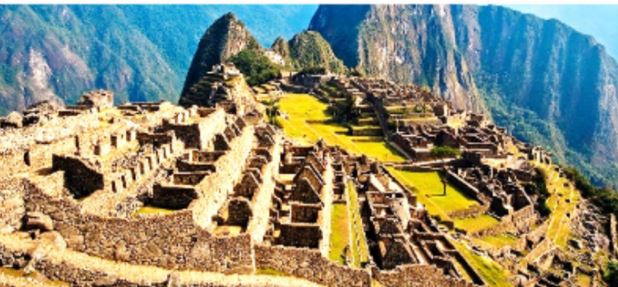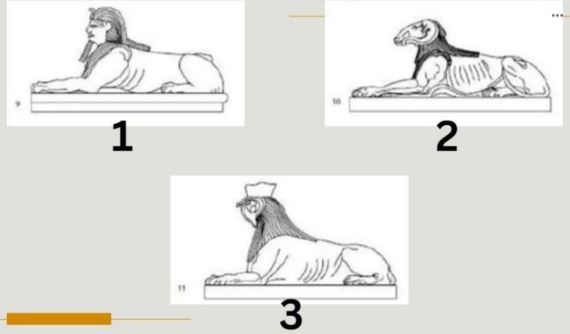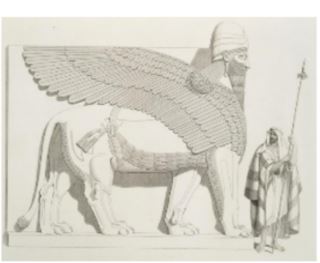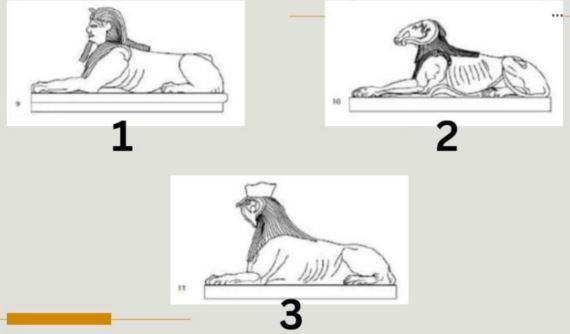Q1 - Prehistoric, Egyptian and West Asiatic
1/43
There's no tags or description
Looks like no tags are added yet.
Name | Mastery | Learn | Test | Matching | Spaced |
|---|
No study sessions yet.
44 Terms
a. None among the choices
Evidences of pre-historic architecture are significant in the following countries/regions except for:
a. None among the choices
b. Europe
c. Asia
d. Middle East
b. False
Sphinxes are burial chambers with the pharoah’s body buried underneath.
a. True
b. False
a. Mud and stone
What were the first houses made of in ancient Egypt?
a. Mud and stone
b. Shaped bricks and wood
c. Mud and matting
d. Stone and wood
a. True
The Stonehenge is a huge man-made circle of standing stones. One of the most important Megalithic Monuments in Europe: believed to have had religious and astronomical purpose.
a. True
b. False
b. False
Egyptian columns were normally plain and smooth.
a. True
b. False
b. Gobekli Tepe, upper Mesopotamia
This landmark presents Monumental round-oval and rectangular Megalithic structures erected by hunter-gatherers in the Pre-Pottery Neolithic age between 9,600 and 8,200 BCE.
a. Stonehenge, in England
b. Gobekli Tepe, upper Mesopotamia
c. Kreisgrabenanlage, Germany
d. Newgrange, England
a. Machu Pichu Houses
The image below is a prehistoric dwelling in peru and is also called the Inca House. Another term for this development is:
a. Machu Pichu Houses
b. Lima houses
c. None among the choices
d. Stone and hay houses

Catalhoyuk
A housing development in Ancient Turkey where houses are available through the rooftop.
a. 2
Which of the following is the criosphinx?
a. 2
b. 3
c. 1

b. 3 and 4
Which among the following structures were never physically evidenced/excavated?
1. Ziggurat
2. Ishtar Gate
3. Hanging Garden of Babylon
4. Tower of Babel
a. 4 and 1
b. 3 and 4
c. 2 and 3
d. 1 and 2
c. Winged Human Headed Lion
a. Winged Deity
b. The Trojan Horse
c. Winged Human Headed Lion
d. Bas relief in a temple

Megalithic
Generally prehistoric structures are __________, or an architecture of stone
b. 1
Which of the following is the Androsphinx?
a. 3
b. 1
c. 2

c. Lascaux Cave, Dordogne, France
A cave containing one of the most outstanding displays of prehistoric art yet discovered. Located above the Vezere River valley near Montignac, in Dordogne, France, the cave is a short distance upstream from the Eyzies-de-Tayac series of caves.
a. Magura Cave
b. Grotto de Fone-de-Gaume
c. Lascaux Cave, Dordogne, France
d. Altamira Cave
A. True
Papyrus is a type of paper that ancient Egyptians use for writing.
A. True
B. False
b. False
The Egyptians did not believe in the after life.
a. True
b. False
Lascaux Cave
The famous cave in France housing various evidences of Ancient man’s worship and art.
d. Ziggurat
Which among the following building types or monumental structures are not built by the Egyptians.
a. Mastaba
b. Pyramid
c. Sphinx
d. Ziggurat
a. Fertile Crescent
An agricultural region from the Eastern shores of the Mediterranean Sea in the West to Iraq and in: location of human kinds earliest cultures.
a. Fertile Crescent
b. Egypt
c. Garden of Eden
d. Mesopotamia
b. False
A mastaba is a typical Egyptian home.
a. True
b. False
b. False Tomb Chamber
Identify part No.6 of the pyramid
a. Grand Gallery
b. False Tomb Chamber
c. Queen’s Chamber
d. King’s Chamber

a. True
Burial Mound in Newgrange Ireland is an artificial hill of earth and stones built over the remains of the dead.
a. True
b. False
a. True
Hypostyle meant and open space with a series of columns.
a. True
b. False
d. None among the choices
Believed to be created by King Nebuchadnezzar for this wife, it is an evidence of having space features in palaces that appreciate vistas.
a. Ziggurat
b. Ishtar Gate
c. Tower of Babel
d. None among the choices
d. True
Although few and not significant, it can be noted that the West Asiatic Architecture had arched features in it.
a. None among the choices
b. False
c. Both true and false
d. True
c. Pylon
A gateway to an Egyptian temple.
a. Avenue of Sphinx
b. Hall
c. Pylon
d. Entryway
b. False
Hypostyle meant an open space filled with Sphinxes.
a. True
b. False
a. Ancient Egypt
Monumental pyramids, temples, and shrines. This architecture is classified under which historical design period.
a. Ancient Egypt
b. Mesopotamia
c. Classical
d. Greek
d. Dolmen
A prehistoric monument consisting of at least 2-3 large standing stones.
a. None among the choices
b. Stonehenge
c. Cromlech
d. Dolmen
a. True
Dolmen is a type of stone monument found in a variety of places throughout the world. It is made of two or more upright stones with a single stone lying across them.
a. True
b. False
c. Obelisk
A monumental, four-sided stone mortuary structure that is usually monolithic.
a. Pyramid
b. Mastaba
c. Obelisk
d. Androsphinx
b. Ziggurat
It usually has one flat top rectangular mound carrying the upper temple.
a. Holy Mountain
b. Ziggurat
c. Pyramid
d. Sphinx
d. Stacking Technique
A primitive construction method where stone is placed on top of each other; It does not involve the usage of binding agents but rely only on balance and placement/positioning of stones for perfect balance.
a. Carving Technique
b. Planting Technique
c. Piling Technique
d. Stacking Technique
a. Harem
Private family apartment or women’s quarter.
a. Harem
b. Seraglio
c. Veterans
d. Khan
a. Criosphinx
Which of the following is not a pre-historic structure.
a. Criosphinx
b. Dolmen
c. Cromlech
d. Stonehenge
a. True
An Egyptian obelisk has similarities to the Menhir.
a. True
b. False
Round Barrow
A burial mound in England that is circular in shape. _______
a. True
Hypostyle meant an open space with a series of columns.
a. True
b. False
a. True
Imhotep was a sage, architect, astrologer, and chief minister to Djoser.
a. True
b. False
b. Mesopotamia
An ancient region in Western Asia between Tigris and Euphrates rivers, comprising theland of Sumer and Akkad and occupied by the Sumerians, Babylonians, Assyrians and Persians(now part of Iraq).
a. West Asiatic Area
b. Mesopotamia
c. None among the choices
d. Fertile Crescent
a. True
Following the conquests of Alexander the Great, the architecture of West Asia was influenced by Hellenistic and later Roman styles. This period saw the construction of theaters, amphitheaters, and monumental public buildings.
a. True
b. False
c. Menhir
A tall stone put in a vertical position by people in prehistoric times.
a. Stone Circles
b. Column
c. Menhir
d. Dolmen